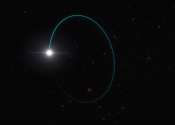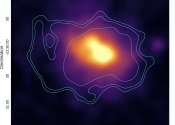Most massive stellar black hole in our galaxy found
Astronomers have identified the most massive stellar black hole yet discovered in the Milky Way galaxy. This black hole was spotted in data from the European Space Agency's Gaia mission because it imposes an odd 'wobbling' ...









